 I am regularly asked: “Why should I mill whole wheat and grains at home“? It’s certainly an important question, and one that I asked myself when I first became interested in whole wheat and grains. Now, I know why it is so important!
I am regularly asked: “Why should I mill whole wheat and grains at home“? It’s certainly an important question, and one that I asked myself when I first became interested in whole wheat and grains. Now, I know why it is so important!
On my weekly radio show, I explore the topic and offer some insights. We want to share that recording with you and hope you will offer your comments below.
We certainly want to invite you to attend our weekly live show, “Encouragement in the Kitchen.” If you are unable to attend, we record the shows and post the audio recordings in our radio archives section.
We always love to hear your comments.
Best Blessings!
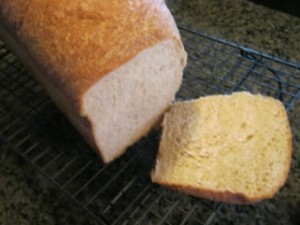 It wasn’t too many years ago that every morning moms around America would wake up early to put bread in the oven, or shuffle into town to the local bakery. Homes across the country would have the unique aroma of freshly baked bread.
It wasn’t too many years ago that every morning moms around America would wake up early to put bread in the oven, or shuffle into town to the local bakery. Homes across the country would have the unique aroma of freshly baked bread.
While we are all thankful for the convenience of store-bought and pre-sliced bread today, there’s still nothing that compares to the smell and taste of a wonderful loaf of home-cooked bread.
Bread baking is an art, one that inspired Donna Miller to help pass it on to other families through Miller’s Grain House and her new e-book, Whole Wheat Bread Making.
Making your own whole wheat bread has several benefits:
- Simple enough for everyday, but delicious enough for special occasions.
- Your kitchen is filled with wonderful aromas.
- Making your own bread is healthier than preservative filled bread.
- Homemade bread tastes wonderful.
- Kneading bread dough is a great stress relieving exercise, and a great alternative to physical violence against the causes of your stress. (Offspring and spouses in particular.)
- Delicious satisfaction following a job well done.
- There is a wonderful smell from the cooling rack.
- More economical than store-bought bread.
- Huge variety of uses from simple toast or sandwiches to gourmet dinners.
- … And did we mention the amazing smell!
This e-book walks you step-by-step through every detail of becoming a master bread maker. It is filled with 40 pages of instructions, tips, detailed photos and diagrams showing you how to make a variety of whole wheat breads. Whether you prefer hand kneading or using a bread machine, you’ll receive detailed instructions. You’ll learn how to make perfectly formed the loaves with bakery perfection, and do free-form baking without a pan. You’ll learn kneading and folding techniques. It will help you choose the best bakeware and what to look for in a bread making machine. You’ll learn everything from setup to clean up. We teach you the proper way to slice bread without tearing. And… you will learn to make hoagie rolls, hot dog buns and hamburger buns.
Whether you want to make bread once a day or once a year, you’ll love this resource.
Donna Miller is a teacher, author, and talk radio host with two weekly broadcasts specializing in encouragement in the kitchen.
Donna’s e-book, Whole Wheat Bread Making, is available for instant download today for only $9.97. Downloaded to your computer, iPad or Kindle and get ready to bake.
Order the Make Bread e-book today! Order Here
Warning: Excessively awesome smells from your kitchen tend to attract neighbors, friends, and family. Miller’s Grain House cannot accept responsibility for the appearance of bread loving moochers. Possible side effects include: unwillingness to settle for store-bought in the future, improved health, random hugs and kisses from family members. Bake at your own risk!
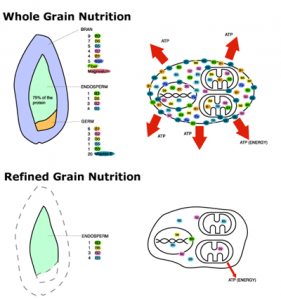 There is mounting and evidence of the health challenges associated with using refined white flour. It is staggering to the mind when you consider the overwhelming facts showing the problems and dangers of consuming refined white flour. I am convinced we must educate people if we are ever going to have a major impact on the health crisis that is facing the world.
There is mounting and evidence of the health challenges associated with using refined white flour. It is staggering to the mind when you consider the overwhelming facts showing the problems and dangers of consuming refined white flour. I am convinced we must educate people if we are ever going to have a major impact on the health crisis that is facing the world.
Studies have been done on many ailments since the processing (stripping for shelf purposes) of whole grains in the early 1900’s.
Gout, anemia, diabetes and depression are just a few of the ailments that are impacting people worldwide. These health concerns can all be linked to vitamin deficiencies that are missing in refined flours after the turn of the century. It’s a problem that we created for ourselves with the move toward the “convenience” of shelf flour.
The answer to many health issues is to use the whole grain as it was intended. Fresh, live and whole is what is best for your health, your body, and your energy. Most people can understand the logic that in order to improve “life” in your health, you need to consume live food. It takes no more time to mill your own flour at home with live whole wheat, than it does to gather the ingredients for pancakes.
Do your body and your family a favor by feeding them ALL the nutrients designed in grains rather than partial, processed and packed convenient ‘dead’ flours.
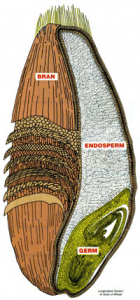 If you have read many of my articles on whole wheat and grains or have listened to my weekly radio show, you know that I am a strong advocate of using whole wheat. Years ago, I stopped purchasing bagged flour from the store because I believe the nutritional value of whole wheat is important for my family.
If you have read many of my articles on whole wheat and grains or have listened to my weekly radio show, you know that I am a strong advocate of using whole wheat. Years ago, I stopped purchasing bagged flour from the store because I believe the nutritional value of whole wheat is important for my family.
When you consider what is missing from bagged flour, you will understand the reason I am so supportive of milling fresh whole grains. Consider the following:
What nutrients are in a bag of flour that has been sitting on the shelf? We can take into consideration the fact that we know from what has been removed, it is NOT 100% of the nutrients as if the whole kernel were consumed. Continue reading
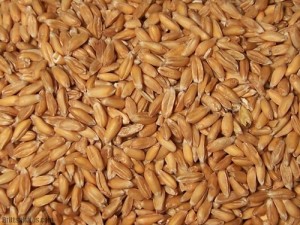 More people are beginning to experience the goodness of using whole grains. From the joy of smelling fresh baked breads in the kitchen, to the delicious taste of the end product, nothing quite compares to the goodness of whole grains. But the most important part for our family is the incredible nutritional value.
More people are beginning to experience the goodness of using whole grains. From the joy of smelling fresh baked breads in the kitchen, to the delicious taste of the end product, nothing quite compares to the goodness of whole grains. But the most important part for our family is the incredible nutritional value.
In order to get the most nutrition from whole grains there are a few very simply rules you should follow.
For Grain in the Hull:
- Keep in an air-tight container in a cool room below 80 degrees Fahrenheit.
- Keep free from humidity and be sure the container does not promote any condensation.
- Keep away from a direct heat source or direct sunlight.
For Freshly Milled Whole Grain Flour:
- Use immediately for peak nutrition
- Store any unused freshly milled flour for up 7 days at the next best optimum nutrition and up to 6 months before its spoiled.
- Fresh milled flour is susceptible to moisture in the air. Store immediately.
Whole Grain Flour – Store bought.
- This flour is already stripped of many oils and nutrients to give it a long shelf life.
- Store bagged flour in a dry place for up to one year.
- It is not and cannot become as nutritionally sound as freshly milled flour.
Once the grain is baked into a baked good, protect that goodness with a little more attention to storage. Whole grains tend to dry out faster than bleached or processed grains. You may want to store them in the refrigerator and you certainly will want to make sure they are stored in an airtight container or package.
Usually, in our home, once the grain is milled and then used, the items are not around long enough for them to spoil – we eat them too fast! To have the goodness of whole grains for a prolonged span of time, simply requires a little planning and protection.
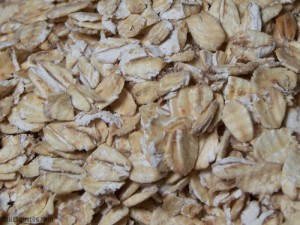 Oats are far more versatile than to simply be used for porridge or gruel. Whole Oats (usually Whole Rolled Oats) are a great source of protein, fiber, vitamins, and minerals. Whole oats have been proven to help reduce cholesterol levels and make a great healthy breakfast that will keep you contented all the way until lunch.
Oats are far more versatile than to simply be used for porridge or gruel. Whole Oats (usually Whole Rolled Oats) are a great source of protein, fiber, vitamins, and minerals. Whole oats have been proven to help reduce cholesterol levels and make a great healthy breakfast that will keep you contented all the way until lunch.
Oats are very seldom sold with the hull left on for eating. The whole oat grain is usually called “oat groats”, which is the least-processed form which can be used in the same ways you would use wheat kernels. Oat groats can be milled into flour or flaked into what we are used to as Old Fashioned Rolled Oats.
Steel Cut Oats are whole oat groats which have merely been roughly cut. Old-fashioned have been flattened and quick-cooking oats have been steamed a bit, cut and flattened to speed cooking process. Instant oatmeal has been rolled very thin and is already partially cooked. For nutrition (and some people would say for full texture), a thick rolled oat is the most full bodied option for a substantial oatmeal.
Because of their somewhat higher fat content, oats should be stored away from any heat or damp in an airtight container. The suggested storage time for oats is about three to six months.
In addition to porridge, oats can be used for stuffing, added to baked goods, or cooked whole and added to grain salads. Try using them in place of bread crumbs for meatloaf. Top a cobbler with a mixture of whole wheat flour, butter, sugar and whole oats. It’s also easy to make your own Granola!


